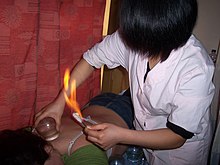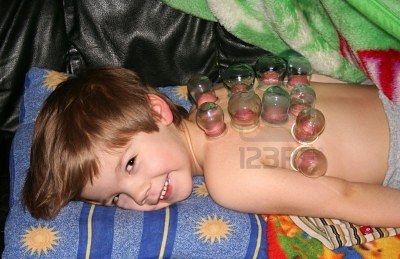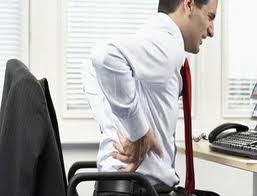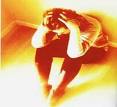
- ADIYAMAN HACAMAT
- MİGREN: Migreniniz mi var? torbalarla ilaç kullanmaktan bıktınızmı? Peki Hacamat ı denediniz mi? Bir çok hastalığın yanı sıra Migren Hacamat ile yarım saatlik bir işlemdir. Allah ın izniyle. Aynı şey sinüzit için de geçerlidir.

- ADIYAMAN HACAMAT
- Tedavi için baş vurduğunuz en güzel çare Hacamat,tır (HZ.MUHAMMED MUSTAFA S.A.V.)

- ADIYAMAN HACAMAT
- Adıyaman ve çevresindeki (Kahramanmaraş, Gazi antep, Şanlıurfa, Diyarbakır, Malatya, Elazığ, Bingöl, Muş, Bitlis,Batman, Mardin, Sivas,,Siirt,Kilis, .vs.)illerde HACAMAT olmak isteyen kardeşlerimiz en az 15 kişi olacak şekilde toplanmaları durumunda Haccam'ı davet edebilirler.

- ADIYAMAN HACAMAT
- Miraç gecesinde hangi melek cemaatine rastladıysam ey Muhammed as. ümmetine Hacamat ı emret .Hadis i şerif (Ali Nasıf,et-tac,3,203

- ADIYAMAN HACAMAT
- Peygamber efendimiz (sav) in tedavi yöntemlerinden biri olan Hacamat, başta Amerika olmak üzere Dünyanın bir çok ülkesinde üniversitelerde ders olarak okutulup uygulanıyor.

- ADIYAMAN HACAMAT
- Hacamat öncesi: Hacamat olacak kişinin istirahatlı yani vücudunun dinlenmiş olması gerekir. En az 3-4 saat bir şey yenmemesi gerekir.Bir gün evvel cima yapılmaması gerekir. Hacamat sonrası tavsiyeler: Hacamat sonrası yağlı ve ağır gıdalar alınmamalı. Ciğer, et gibi. İki gün süt ürünleri yenmemeli. İki gün banyo ve cima yapılmamalı. Ayrıca Hacamattan sonra 3-4 saat uyumamalı eğer hemen uyulursa hacamatın faydası eksilir..

- Adıyaman Hacamat
- Adıyaman ve çevresindeki illerde hacamat olmak isteyen kardeşlerimiz.

- ADIYAMAN HACAMAT
- Bel ve boyun fıtığı tedavisi, Hacamat ile çok kolay, deneyin görün. Hacamat, yan etkisi ve riski olmayan bir tedavi metodudur, tabii ki ehline yaptırırsanız.
Fire cupping
|
|
This article needs additional citations for verification. Please help improve this article by adding citations to reliable sources. Unsourced material may be challenged and removed. (June 2007) |
| Fire cupping | |
|---|---|
 |
|
| A patient receiving fire cupping therapy |
Cupping therapy is an ancient form of alternative medicine in which a local suction is created on the skin; practitioners believe this mobilizes blood flow in order to promote healing.[1] Suction is created using heat (fire) or mechanical devices (hand or electrical pumps). It is known in local languages as baguan/baguar, badkesh, banki, bahnkes, bekam, buhang, bentusa, kyukaku, gak hoi, Hijamah, kavaa (ކަވާ), singhi among others.
Contents |
Description
The air inside the cup is heated and the rim is then applied to the skin, forming an airtight seal. As the air inside the cup cools, it contracts, forming a partial vacuum and enabling the cup to suck the skin, pulling in soft tissue, and drawing blood to that area. Alternately, the suction is created by a hand-pump and blood is allowed to collect. According to the American Cancer Society, "[a]vailable scientific evidence does not support cupping as a cure for cancer or any other disease". It can leave temporary bruised painful marks on the skin and there is also a small risk of burns.[2]
History
There is reason to believe the practice dates from as early as 3000 B.C.; the earliest record of cupping is in the Ebers Papyrus, one of the oldest medical textbooks in the world. It describes in 1,550 B.C. Egyptians used cupping. Archaeologists have found evidence in China of cupping dating back to 1,000 B.C. In ancient Greece, Hippocrates (c. 400 B.C.) used cupping for internal disease and structural problems. This method in multiple forms spread into medicine throughout Asian and European civilizations.[citation needed]
Cupping in Europe and the Middle East grew from humoral medicine, a system of health ancient Greeks used to restore balance through the four "humors" in the body: blood, phlegm, yellow bile and black bile. This system was pervasive in European and Middle-East cultures at the time. Humoral medicine had a brief or short revival in European medicine in the 18th and 19th centuries, and cupping was used in this practice.[3]
In the West, cupping therapy was part of the basic repertoire of clinical skills a doctor was expected to understand and practice until the latter part of the 19th century with some Eastern European countries such as in Poland and Bulgaria continuing to practice cupping therapy to the present. In parts of Western Europe there has been a recent upsurge in the interest from both public and academic perspectives. Societies like the British Cupping Society have contributed to its re-emergence.
Methods
Broadly speaking there are two types of cupping: dry cupping and bleeding or wet cupping (controlled medicinal bleeding) with wet cupping being more common.[citation needed] The British Cupping Society (BCS), an organisation promoting the practice, teaches both. As a general rule, wet cupping provides a more "curative-treatment approach" to patient management whereas dry cupping appeals more to a "therapeutic and relaxation approach". Preference varies with practitioners and cultures.[citation needed]
Dry cupping
The cupping procedure commonly involves creating a small area of low air pressure next to the skin. However, there is variety in the tools used, the method of creating the low pressure, and the procedures followed during the treatment.[4]
The cups can be various shapes including balls or bells, and may range in size from 1 to 3 inches (25 to 76 mm) across the opening. Plastic and glass are the most common materials used today, replacing the horn, pottery, bronze and bamboo cups used in earlier times. The low air pressure required may be created by heating the cup or the air inside it with an open flame or a bath in hot scented oils, then placing it against the skin. As the air inside the cup cools, it contracts and draws the skin slightly inside. More recently, vacuum can be created with a mechanical suction pump acting through a valve located at the top of the cup. Rubber cups are also available that squeeze the air out and adapt to uneven or bony surfaces.[citation needed]
In practice, cups are normally used only on softer tissue that can form a good seal with the edge of the cup. They may be used singly or with many to cover a larger area. They may be used by themselves or placed over an acupuncture needle. Skin may be lubricated, allowing the cup to move across the skin slowly.
Depending on the specific treatment, skin marking is common after the cups are removed. This may be a simple red ring that disappears quickly, the discolouration left by the cups are normally from toxins penetrating the skin, coming from inside out as a form of fluid film, and vapour left in the cups. It is possible more aggressive treatments can result in bruising especially such as dragging the cups while suctioned from one place to another to break down muscle fiber. Usually treatments are not painful, but treatment is discontinued if the subject experiences more than minor discomfort[citation needed].
Fire Cupping
Fire cupping is a treatment where a cotton ball dipped in 70% or greater alcohol is lit and the cotton ball is then introduced inside of the cup for a brief second. The cup is then placed on the patient. As the heat dissipates, the cooling action creates the firm suction. The cups can be moved around the patient's body along the "meridians" and at specific points to allegedly help with immune boosting and other "modalities".
Wet Cupping (Al-Hijamah or medicinal bleeding)
|
|
This section needs additional citations for verification. Please help improve this article by adding citations to reliable sources. Unsourced material may be challenged and removed. (November 2007) |
While the history of wet cupping may date back thousands of years, the first documented uses are found in the teachings of Prophet Muhammad .[5] According to Muhammad al-Bukhari, Muslim ibn al-Hajjaj Nishapuri and Ahmad ibn Hanbal, Muhammad approved of the Hijama (cupping) treatment.[6]
In this alternative form of bloodletting or medicinal bleeding, also called blood cupping, a small scratch or incision is made with a lancet prior to the cupping, and the pressure difference extracts blood from the skin. Islamic traditional medicine uses this technique – called in Arabic Al-Hijamah or Hijamah - with a number of hadith supporting its recommendation and use by the Islamic prophet Muhammad. As a result, the practice of cupping therapy has survived in Muslim countries. Today, wet cupping is a popular remedy practiced in many parts of the Muslim world .[7]
Alternatively, mild suction is created using a cup and a pump (or heat suction) on the selected area and left for about three minutes. The cup is then removed and small superficial skin incisions are made using a cupping scalpel. A second suction is used to carefully draw out a small quantity of blood. The procedure was piloted and developed by Ullah et al 2005 and has been endorsed by the British Cupping Society[1] which aims to promote, protect and develop professional standards in cupping therapy.
Traditional Chinese medicine cupping
In traditional Chinese medicine (TCM) cupping is a method of applying acupressure by creating a vacuum on the patient's skin to dispel stagnation—stagnant blood and lymph, thereby improving qi flow—to treat respiratory diseases such as the common cold, pneumonia and bronchitis. Cupping also is used on back, neck, shoulder and other musculoskeletal conditions. Its advocates say it has other applications, as well.[8]
Limited bruising cupping massage
New silicone cupping therapy massage cups are available, an innovation for cupping therapy and its wider acceptance. "Medical silicone" cups are claimed to alleviate deep bruising associated with traditional cupping.[citation needed] The cups allow for added new massage techniques because they are simple to use and are pliable, unlike glass or plastic. It is also highly recommended to drink plenty of water after cupping to help move the blood and other fluids through the area affected, general massage is able to help reduce the blood bruising immediately after the cupping.







